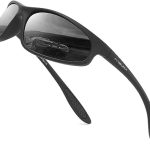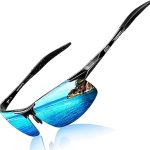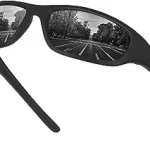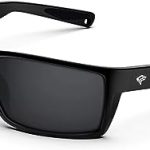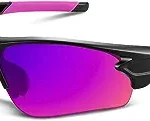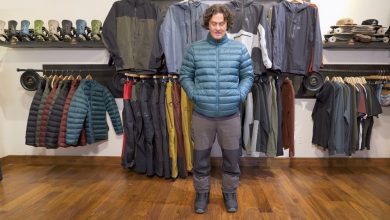Best Sunglasses For Hiking: Buyers Guide
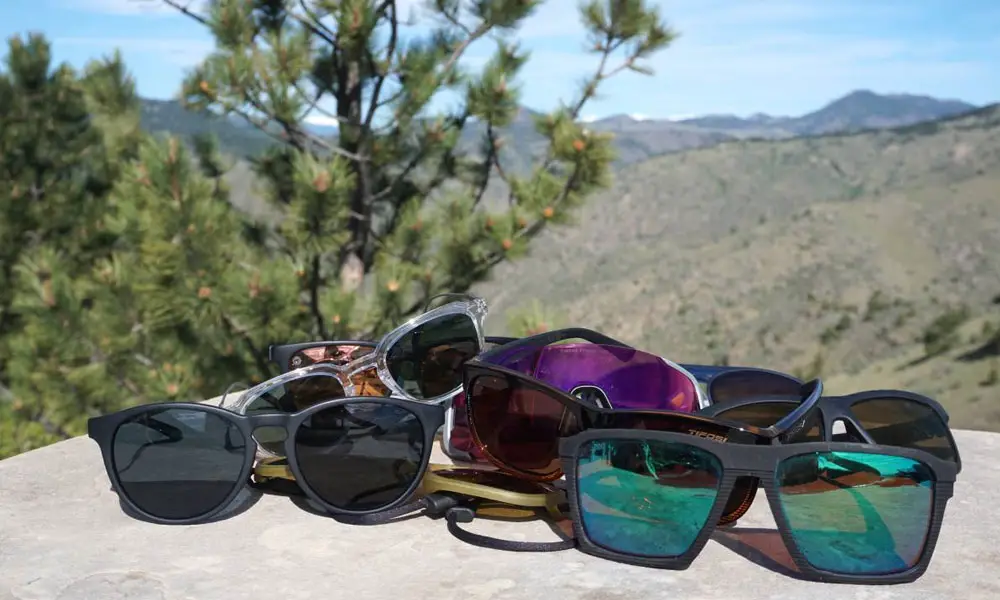
Trekking or hiking involves walking outdoors for an extended period. Hence, you are exposed to harmful UV and harsh sun rays almost every time you walk. The effect of UV rays is especially harsh on your eyes and may even blur your vision occasionally. So, it is a no-brainer that you need some form of protection against it.
When selecting the best sunglasses for hiking, you must get ones that promise 100% protection against UV rays. The UV ray protection must include protection against UVA and UVB rays.
However, it is also important to invest in a pair of sunglasses for hiking with some level of tint. Because tint allows your sunglasses to protect against glare from the sun, clear sunglasses will protect against UV rays, but glare might still be a problem that tinted sunglasses can solve. So, invest in one that is both tinted and UV-protected.
Since it can get quite confusing when choosing the best sunglasses for hiking, we present an exhaustive article that discusses the various aspects you must look for while buying a pair.
Do hikers wear sunglasses?
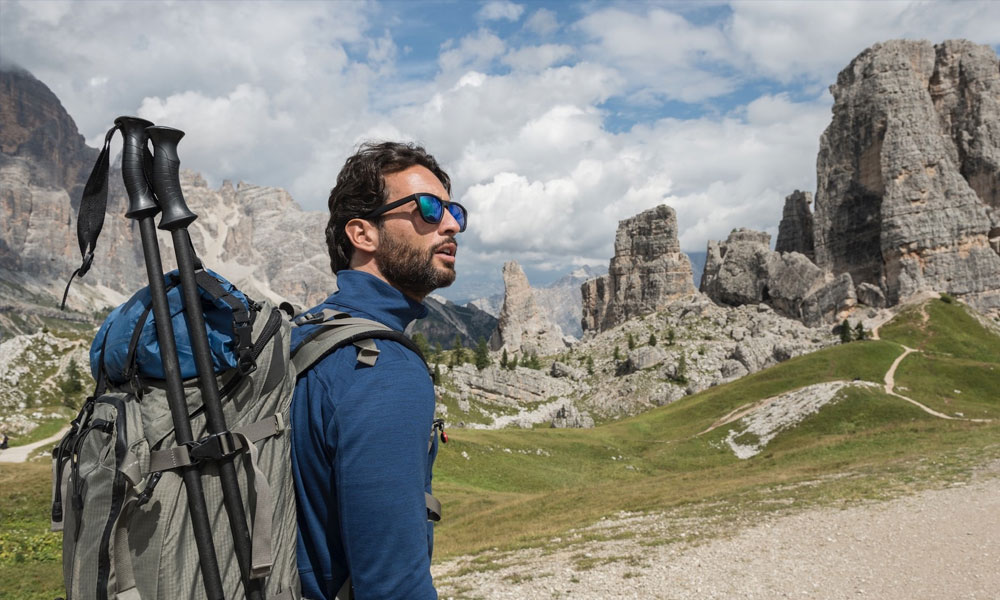
One of the most important steps while hiking is to look for sunglasses perfect for this adventurous activity. But it is always important to invest in the best sunglasses for hiking. So, you will often see hikers wearing sunglasses because they protect your eyes from glare and UV rays and make your journey comfortable and enjoyable.
If you are someone who goes for a hike regularly, then wearing the best sunglasses for hiking is even more important. But not any sunglasses will suffice. You need a special type of hiking sunglasses.
They should perfectly fit your face and completely cover your eyes. They must not be too tight or too big for your face but must be just right. They should also not slide, jump, or move around while you are hiking, trekking, or climbing. Also, the most important and obvious is that they should never fall and stick like glue on your face.
While purchasing a pair of sunglasses for hiking, look for the ones with rubber on their arms to ensure your sunglasses don’t slip and slide. If you cannot find sunglasses that work well for your face according to your style, you can use a retention strap to make the sunglasses stick to your face.
5 Best Sunglasses for Trekking
Which sunglasses are best for hiking?
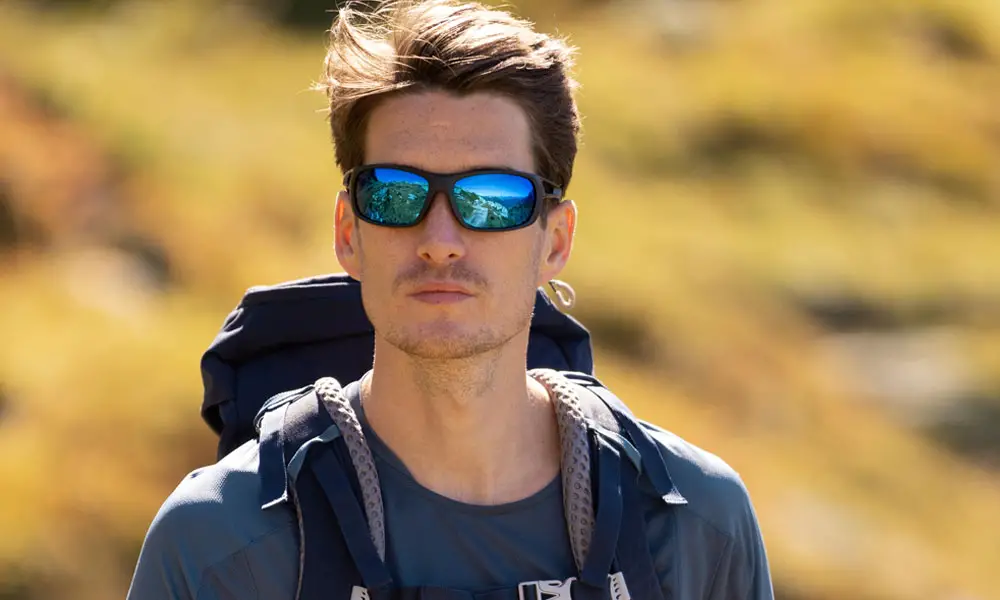
With so many varieties of sunglasses in the market, specially designed for hiking, trekking, camping, skiing, or other adventurous activities, it is often very hard to choose the best sunglasses for hiking. There are varieties in not only models of sunglasses but you can also see differences in the colors. So, choosing the right ones can be quite confusing.
Hence, sunglasses are categorized into four main groups to make things easier. These categories are based on two factors: the level of tint intensity and the weather conditions the sunglasses are appropriate to wear. So, whenever you choose the best sunglasses for hiking, look for the ones that suit the weather of the place you are going for the hike and the type of terrain you will walk on.
The Category 4 Hiking Sunglasses
If you are going on a hike where the intensity of sunlight is too much and the probability of glare is higher, go for the category four sunglasses. These sunglasses are designed for areas with the highest chance of your eyes getting damaged by UV rays. Therefore, go for category four sunglasses if you are going on an adventure in the mountains or glaciers.
When we talk numbers, the category four sunglasses can filter around 92 to 97 percent of UV rays. They can also reduce glare to the maximum amount. So, often, the lenses of these sunglasses are darkly tinted.
One thing to remember while using category four sunglasses is that you can’t drive while wearing them.
The Category 3 Hiking Sunglasses
Let us now talk about category three sunglasses. These sunglasses are made to provide the ultimate level of comfort any hiking sunglasses can ever provide. These sunglasses are designed to be worn on intense sunny days with the highest chances of encountering UVA and UVB rays.
If you are going on hikes during the daytime, especially in summer or spring, use the category three sunglasses. Also, these sunglasses are used on hiking trails without sun protection, like the ridge pathways or trails with open air.
However, you can also wear the category three sunglasses for outdoor activities and sports like skiing.
The Category 1 and The Category 2 Hiking Sunglasses
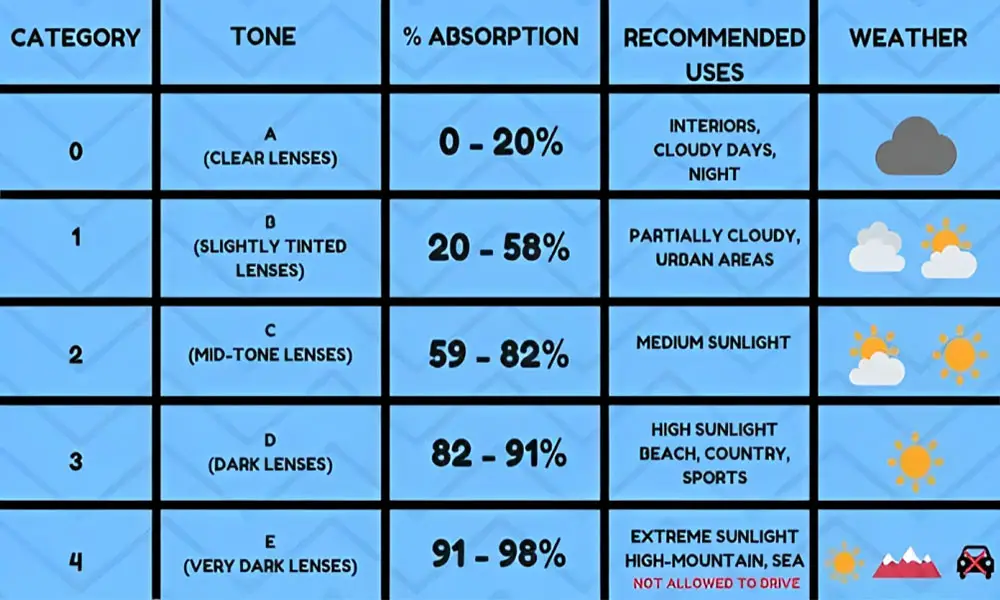
Although category one and two hiking sunglasses are the highest, they aren’t recommended during hiking or any other hiking-like adventure. These do not provide the protection you might need for hiking, especially for your eyes. They have the least protection against UV rays and little to no tint to protect against glare.
So, the chances of you going blind on your hiking trail might also increase while wearing category one and two hiking sunglasses. Also, if your hiking trail is extremely cloudy and the days are with little to no direct sunlight, then you might wear these category sunglasses.
Okay, these are all the main categories of sunglasses for hiking. But we do have an exciting tip for you. You can also go for hiking sunglasses with photochromic lenses that adjust your sight and protection at the level of the trekking trail. They also have varying levels of tint from which you can choose according to your trial and the amount of UV rays you are most likely to get.
Do I need polarized sunglasses for hiking?
When choosing the best sunglasses for hiking, you must also know what polarized sunglasses are. First, let us know what a polarized lens is. Polarized lenses are also anti-glare lenses, and from their name, you might have guessed their purpose: to reduce glare and its consequent effect on the eyes.
Polarized lenses can also reduce the level of strain on your eyes. So, they are popular for increasing protection against harmful sun rays and improving your vision. These lenses are especially important during outdoor activities where the chances of getting blindsided or affected by the sun’s glare are the highest.
So, now let us talk about the need for polarized glasses during hiking. It would help if you had it. Wearing polarized sunglasses can protect your eyes, increase your depth of vision, and make the surroundings look more bright and vibrant.
While hiking, polarized sunglasses can protect your eyes against eye strain fatigue, keep your eyes cool and from getting watery, and even prevent headaches induced by sunlight. So, they make your hiking adventure ten times more enjoyable and better.
Is there a downside to polarized sunglasses?
Okay, to know and purchase the best sunglasses for hiking, we must also know the downsides or disadvantages of polarized sunglasses. Knowing the bad side of something is equally important to knowing the good side because it helps us to make clear and efficient decisions.
One of the greatest disadvantages of wearing polarized sunglasses is encountering an LCD screen. Because of how polarized lenses filter rays, they don’t work with LCDs. When you look at an LCD screen with polarized lenses, it may look dark or even blank.
Another disadvantage of wearing polarized sunglasses for hiking is that they do not protect against UVA and UVB rays.
Which is better, polarized or non-polarized sunglasses?
After knowing what polarized and non-polarized sunglasses are, let us discuss which is better. This question is important in finding the best sunglasses for hiking. So, let us get into it.
With a coating of tint on its lenses, polarized sunglasses help reduce glare, which is not possible in non-polarized glasses. In addition, polarized glasses filter horizontal light waves while letting every vertical light wave. So, pictures appear clearer while wearing polarized sunglasses.
However, on the other hand, non-polarized glasses filter UV rays and do not reduce any glare, sadly.
The money factor is another factor to consider in the polarized vs. non-polarized sunglasses battle. Polarized sunglasses are always more expensive than their non-polarized counterparts. So, if money is a factor and you do not have a high amount, the non-polarized glasses can be a better buy.
Although glare protection is guaranteed in polarized sunglasses, their UV protection radar is none. However, there are UV-filtering polarized sunglasses too. But look for labeling while buying UV-filtering glare-reducing polarized sunglasses.
Furthermore, polarized sunglasses are darker when we talk about the darkness factor between polarized and non-polarized sunglasses. So, if dark-lense sunglasses aren’t your jam, invest in something other than one.
Finally, for the screened technology lovers out there, polarized sunglasses aren’t for you if you frequently use your phones, laptops, or tablets. Polarized sunglasses don’t work with LCD screens, and these screens might look darker or even black when used while wearing polarized sunglasses.
Go for polarized sunglasses if you are going on adventurous activities like boating, fishing, driving during the daytime, various outdoor athletic activities, and golfing. Buy one that has UV protection, too. However, for day-to-day activities, non-polarized sunglasses will do the trick.
What color sunglasses lenses are best for hiking?
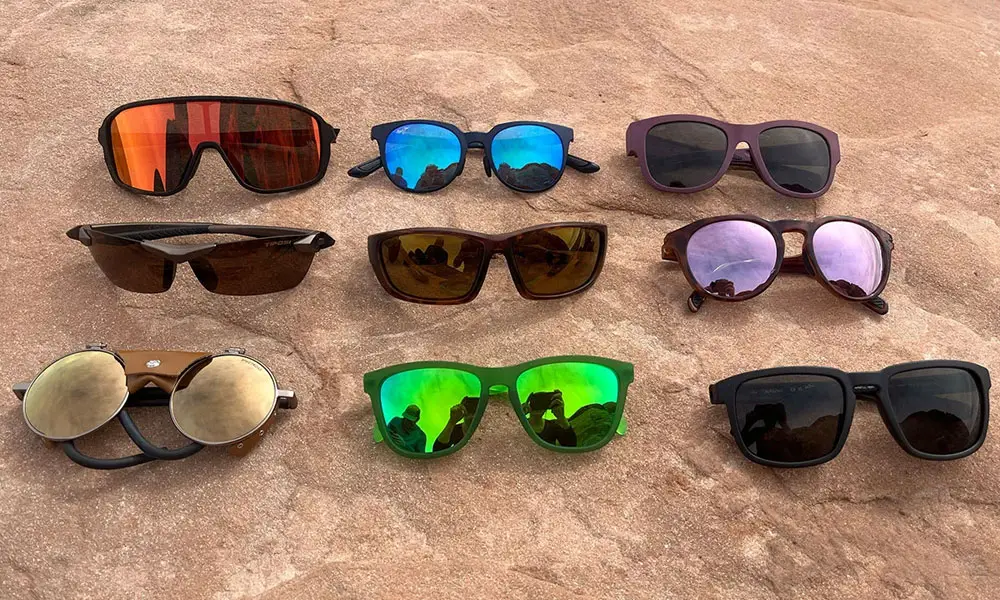
Lens color is important in sunglasses both for fashion and utility. So, let us look at some lens colors with which you can choose the best sunglasses for hiking. Are you ready?
The Brown Lens
If you want to precept depth and contrasting visuals from your sunglasses, then go for sunglasses with brown lenses. They can also be worn during sunny days when everything is bright in your surroundings. They also help filter blue light. Wear brown sunglasses if you go hiking, golfing, driving, or sailing.
The Grey Lens
Gray lenses are the hero of all lens colors, providing clarity on sunny and cloudy days. They also protect from glare. Gray lenses help see things in their actual color. So, they are perfect for outdoor activities like water sports, tennis, hiking, cycling, etc.
Finally, gray lenses are great for protecting your eyes against eye fatigue.
The Yellow Lens
If you are a baseball player, a pilot, or a gamer, you must know the beauty of sunglasses with yellow lenses. Focusing from one thing to another is made easier while wearing yellow lenses. They are well-known for cutting through blue light and work well on a gloomy or hazy day with little sunlight. However, they might cause color distortion in some cases.
The Green Lens
The mixture of gray and brown lenses, a green lens provides the best contrast and amazing color perception. They can be worn on bright and sunny days and hazy days. Green lenses can also reduce glare and make shadows appear brighter. They make your vision clear and are comfortable to wear, too.
The Blue Lens
Worn during snowy or rainy days, the fashionable elites of the hiking association wear blue lenses. They increase your ability to perceive colors and show contours at an advanced level. You can wear these while either skiing or golfing, making you look stylish while protecting your eyes.
The Pink Or Red Lens
Overcast or foggy days call for wearing sunglasses with pink or red lenses. They can be worn while driving and also provide excellent depth perception. They are great for wearing during winter and water sports and reduce strain on your eyes when exposed to blue light.
In conclusion, opt for polarized sunglasses with UV filtering ability and a green lens when choosing the best hiking sunglasses.
You may also like:
